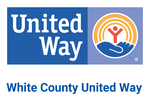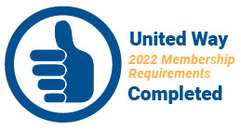|
As you read about opioids and drug use, you may have heard the term “Harm Reduction” and wondered what it was. Harm Reduction is one of the most controversial concepts related to dealing with drug use and treatment.
Harm reduction is “a set of practical strategies and ideas aimed at reducing negative consequences associated with drug use.1” The purpose of harm reduction is to “keep people alive and encourage positive change in their lives.2” Examples of harm reduction for drug use include using Narcan to prevent overdose death, needle exchange programs to prevent the spread of HIV and HepC, and safe use education to reduce infection. Drug use is not the only place where harm reduction has been instituted. “In alcohol policy, harm reduction (though not labeled as such) has long been successful and relatively uncontroversial. The “designated driver” is a harm reduction approach. It accepts that people will drink to excess and works to cut drunk driving and not drinking.3” Harm reduction advocates list seat belt laws, speed limits, child safety seats, air bags, legal blood alcohol limits for drivers, sunscreen, bug spray, bike helmets, nonsmoking laws and nicotine patches as examples of harm reduction. Proponents of harm reduction emphasize the importance of reducing harm for those involved in drug use until they are willing to accept treatment. Their philosophy is that “no society will ever be completely drug free. And since that is the sad-but-true reality, public health efforts should focus on reducing the harms and negative consequences associated with drug abuse, without judgment or condemnation.”4 Opponents to harm reduction believe that harm reductions such as needle exchange programs and Narcan only encourage drug use by sending the wrong message and encouraging others to begin drug use. They believe that harm reduction practices actually encourage drug use by eliminating the negative consequences: disease and death. In addition, they fear that harm reduction’s underlying intention is to promote the legalization of drugs. Some people contrast the expense of an EpiPen or insulin to readily available Narcan provided to people who are intentionally injecting poison into their bodies. In her book The Unbroken Brain, author Maia Szalavitz recounts her twenty five years of addiction and how harm reduction practices affected her struggle for recovery. She states “Critics who say that such programs ‘send the wrong message’ could not be more wrong. When people start to be valued by others, they start to value themselves. Harm reduction nearly always increases the amount of warm, social contact that the most traumatized and marginalized people have.5” She believes that harm reduction communicates to drug users that they are not alone, that someone cares, that change is possible, and that compassion and respect have healing power. Sources for this article: 1 Harmreduction.org 2 https://www.hri.global/what-is-harm-reduction, 3https://www.ashwoodrecovery.com/blog/harm-reduction-strategies-good-or-bad-for-recovery/, 4,5 Szalavitz, Maia, The Unbroken Brain, St. Martin's Press. 2016, pages 233, 236-237 452 words
0 Comments
Your comment will be posted after it is approved.
Leave a Reply. |
AuthorLynn Saylor is the AmeriCorps member working with the United Against Opioid Abuse Initiative alongside the White County United Way. She is a major facilitator of the United Council on Opioids serving White County and a regular contributor to local media. Archives
October 2020
Categories
All
|

 RSS Feed
RSS Feed
